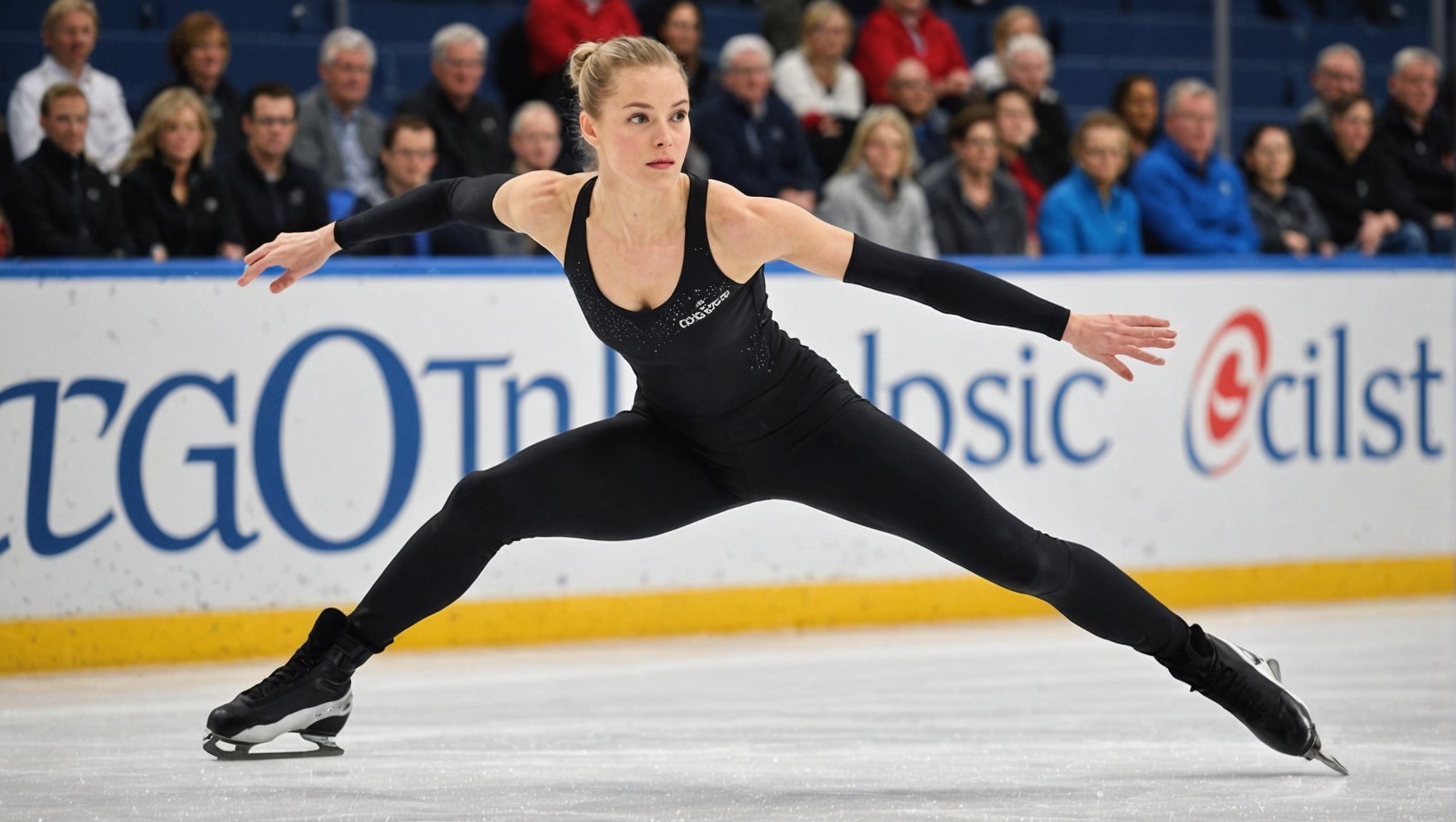Importance of Cross-Training for Figure Skaters
Cross-training plays a pivotal role in enhancing a figure skater’s overall performance. Engaging in various physical activities beyond traditional skating routines provides skaters with a wealth of benefits. It fosters a comprehensive fitness regimen, ensuring that skaters develop strength, flexibility, and endurance that figure skating alone might not fully address. By integrating alternative exercises such as swimming, pilates, or cycling, skaters decrease the risk of overuse injuries while promoting muscle balance.
Importantly, cross-training improves performance on the ice by honing skills indirectly. It equips skaters with improved cardiovascular capacity, ensuring they can execute demanding routines with less fatigue. Moreover, activities such as yoga or ballet enhance balance and coordination, crucial for executing complex spins and jumps with precision.
In the same genre : Best Sock Styles to Prevent Blisters on Extended Hiking Adventures
Experts in the skating community underscore the significance of cross-training for competitive success. They assert that the physical diversity offered by cross-training routines leads to more resilient athletes. Performance enhancement isn’t solely about technical skills but involves developing a robust physical foundation. Thus, systematically incorporating cross-training into a skater’s routine paves the way for holistic progress and longevity in the sport. Skaters who embrace cross-training are better positioned to achieve and sustain peak performance levels.
Strength Training Techniques
Strength training plays a crucial role in enhancing performance in figure skating. It aids in muscle development, which is essential for executing complex moves on the ice.
This might interest you : Essential Nutrients Every Swimmer Must Prioritize During Intensive Training Season
Resistance Training Exercises
To excel in figure skating, incorporating resistance training into your routine can significantly boost performance. Resistance exercises prime the muscles used during skating, benefiting your speed and power on the ice. Recommended exercises include squats, lunges, and deadlifts, which target critical muscle groups. These movements support skaters in building strength and endurance vital for maintaining form and executing jumps.
When integrating resistance training into your weekly regimen, aim for sessions twice a week, allowing rest days for muscle recovery. This balance helps in preventing injury while maximizing muscle development.
Plyometric Exercises
Plyometrics are integral for developing explosive power necessary for figure skating jumps. This type of exercise enhances fast-twitch muscle fibres, crucial for height and distance in jumps. Skaters can benefit from exercises like box jumps, jump squats, and burpees. Incorporating a plyometric workout twice a week complements other training.
Core Strengthening
An essential element in figure skating is core stability. A strong core enhances balance, control, and agility. Targeted exercises such as planks, Russian twists, and mountain climbers are recommended. Adding core workouts to daily practice ensures steady improvement in balance and overall skater stability.
Flexibility and Mobility Enhancements
Enhancing flexibility and mobility is crucial for figure skaters, allowing for improved performance and reduced injury risk. By integrating flexibility training and mobility exercises into their routine, skaters can elevate their abilities.
Stretching Routines
Well-structured stretching routines are essential in any flexibility training programme. Figure skaters should focus on effective stretching techniques, tailored to their sport. Dynamic stretching, involving continuous movement, is best used before skating sessions to activate muscles. In contrast, static stretching works well post-practice for muscle elongation. Creating a personalised routine that mixes these styles ensures comprehensive preparation and recovery.
Yoga and Pilates
Yoga and Pilates offer profound benefits for skaters, enhancing versatility and core strength. Recommended poses—such as the bridge or warrior pose—challenge the body, sharpening focus and stability. Incorporating yoga and Pilates sessions regularly can significantly uplift a skater’s flexion and balance.
Joint Mobility Exercises
Joint mobility holds paramount importance in boosting skating performance and preventing injuries. Opt for effective exercises like hip circles or spinal twists to sustain flexible joints and robust connective tissues. Strategically scheduling mobility training within a skating regimen promotes continuous improvement, aligning well with an athlete’s routine.
By focusing on these facets of agility and range, skaters enhance their craft while safeguarding their physical wellness.
Endurance Training Strategies
Endurance training plays a crucial role in improving athletic stamina and overall performance. This section focuses on effective methods for enhancing aerobic conditioning and building endurance in athletes.
Cardiovascular Workouts
Cardiovascular workouts are foundational for stamina building. Key exercises, like running, cycling, and swimming, can elevate endurance when done consistently. It is advisable to engage in cardio activities for 30 to 60 minutes, three to five times per week. This routine contributes significantly to aerobic conditioning, enabling sustained physical activity over extended periods with less fatigue.
Sport-Specific Drills
For athletes like figure skaters, incorporating sport-specific drills is imperative. Tailoring drills to mimic movements and demands of figure skating ensures that endurance gains are directly transferrable to the sport. Examples include continuous step sequences or extended program run-throughs. Incorporating these drills into regular training enhances stamina and refines skills.
Cross-Disciplinary Endurance Activities
Engaging in cross-disciplinary activities can bolster endurance efforts. Swimming and cycling not only enhance cardiovascular health but also offer a refreshing break from routine training. Including these exercises once or twice weekly can diversify your endurance regime, maintaining motivation and preventing overuse injuries common in monotonous workouts.
Mental Conditioning Techniques
In the competitive world of sports, mental conditioning is as crucial as physical training. This involves techniques to bolster your focus improvement and mental training skills, ultimately enhancing your performance.
Visualization Techniques
Visualization is a powerful tool that can transform competitive performance. By creating vivid mental images of success, athletes prepare their minds for actual scenarios. Studies show that visualization can enhance neural pathways, effectively improving skills without physical practice. To visualize effectively:
- Find a calm environment.
- Picture your desired outcome vividly.
- Engage all senses by imagining the sounds, sights, and feelings of success.
Numerous top athletes attribute their victories to mastering visualization techniques, proving it’s an essential part of mental training.
Mindfulness and Focus Training
Maintaining mental clarity in high-pressure situations is vital. Mindfulness practices, such as deep breathing and meditation, offer profound benefits for focus improvement. Incorporate mindfulness into your training by setting aside time daily for:
- Mindful breathing
- Single-task activities
- Body scan exercises
These practices enhance performance, ensuring your mind remains as sharp as your physical skills.
Goal Setting Strategies
Setting SMART (Specific, Measurable, Achievable, Relevant, Time-bound) goals shapes effective training and competition plans. In figure skating, balancing long-term ambitions against short-term targets helps track progress easily. This balance is key to sustaining motivation and focus throughout training sessions.
Expert Insights and Testimonials
Exploring the world of figure skating reveals the intricate balance between skill, artistry, and athleticism. Leveraging insights from experts and athletes offers a wealth of knowledge that can enhance training regimens and improve performance.
Interviews with Professional Coaches
Professional coaches emphasize that customizing training to fit the unique needs of each athlete is crucial. They recommend integrating cross-training techniques and tailoring them to individual skill levels and goals. Common mistakes skaters make include neglecting basic strength-building and flexibility, which can hinder progress. Utilizing expert advice can prevent these pitfalls, optimizing performance through well-rounded training methodologies.
Athlete Testimonials
Competitive skaters often share their personal experiences to inspire others. Through athlete testimonials, the benefits of cross-training are evident. Specific techniques like yoga and Pilates have vastly improved balance and agility, vital for executing complex maneuvers. Learning from peers not only provides motivation but also highlights practical ways to adapt these techniques to one’s own training.
Research and Studies
Current research underscores the efficacy of cross-training in enhancing figure skating performance. Scientific studies suggest that engaging in diverse physical activities supports muscle development and injury prevention. Recommendations include incorporating strength and cardiovascular exercises that complement skating routines, empowering athletes to achieve peak physical condition and execute challenging routines with ease.






